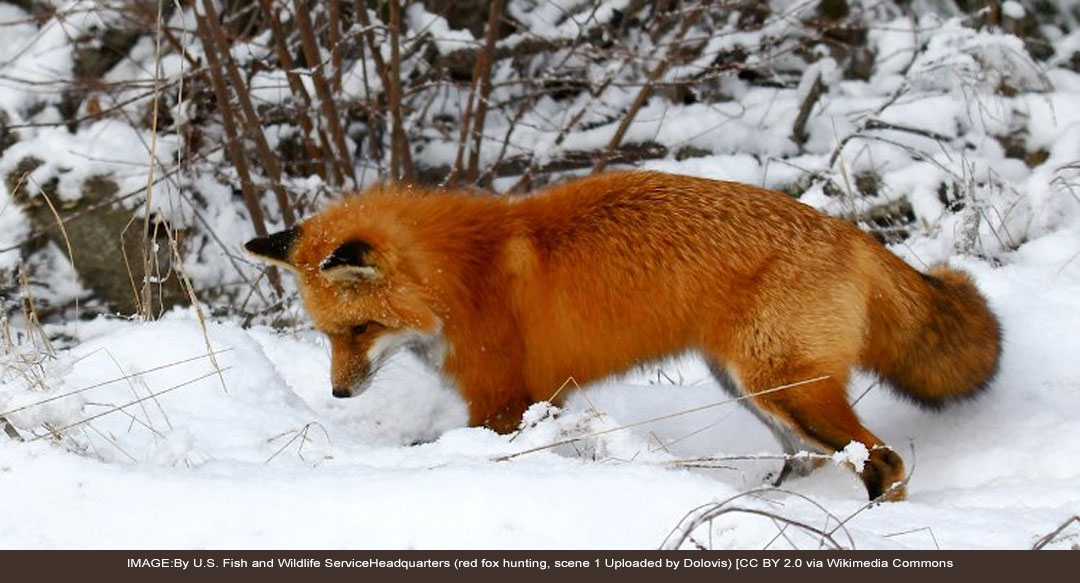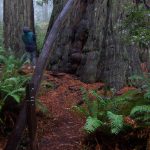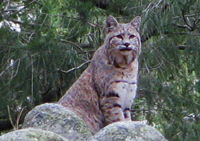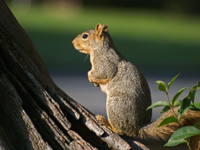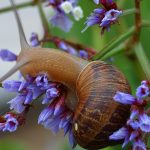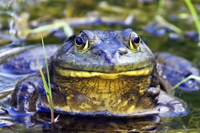Until the late 1770s, California and the entire west coast was sparsely settled. Its vast beauty, bountiful natural resources and superb climate were known only to the Native American population.
Then, between 1769 and 1823, Spanish missionaries built a series of missions and presidios in California. They brought with them European plants and animals, and of course diseases. In 1848, the discovery of gold brought a further massive influx of population to California. Both of these waves of immigrants brought enormous changes to the natural environment of Northern California.
Some of the species impacted by population growth came close to extinction, but extensive conservation efforts have re-established many of them in their historic environments. In addition, human activity has actually benefited some species.
FLORA
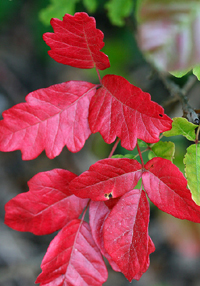 Useful Plants
Useful Plants
Poison Oak
Poison oak does not immediately spring to mind when mention is made of “useful plants”, but Native Americans found any number of things to do with it. Stems and roots were woven into baskets and ground up to make a coarse kind of meal; leaves were processed and used as dye. There are also reports of roasting soaproot bulbs wrapped in poison oak leaves, a culinary adventure perhaps left to the hardiest of intrepid souls.
IMAGE: Via Flickr: Created by Philip Bouchard, licensed under Creative Commons Attribution-NonCommercial-NoDerivs 2.0 Generic (CC BY-NC-ND 2.0) https://creativecommons.org/licenses/by-nc-nd/2.0/
Soaproot
A tough but pretty plant, soaproot was used for a variety of things. It lathered up nicely, making it a good cleansing agent, and it was particularly good as a shampoo since some varieties were effective against dandruff. The plant contains enzymes that are poisonous unless well-cooked, although the leaves of some types are edible. If thoroughly cooked, however, the bulbs are harmless and are apparently quite tasty, something like a sweet potato.
Miner’s Lettuce
An odd but attractive plant, miner’s lettuce has circular leaves with stems growing up through the center. It was widely eaten by the Gold Rush miners to combat scurvy, as they rarely had access to fresh vegetables. It can even be eaten raw, but is more strongly flavored than other leafy greens.
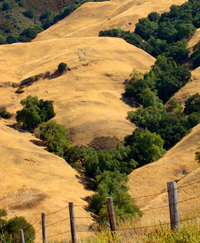 Trees and Shrubs
Trees and Shrubs
Live Oak
Northern California was (and to a degree still is) covered in forests of majestic live oak trees. A tough and hardy tree, it survives almost anywhere but prefers moist to dry soil. It grows 30 to 50 feet high and can spread more than 80 feet wide. It provides bountiful crops of acorns that ripen in a single season, providing abundant food for wildlife. The acorns were so plentiful and versatile that the annual crop largely supported the Native American population of California, making traditional farming and herding almost unnecessary.
California’s live oak trees were severely threatened in the mid 1990s when a disease known as Sudden Oak Death appeared in the region. Caused by the microscopic pathogen Phytophthora ramorum, the disease was probably introduced into Northern California on nursery imports. A related pathogen, Phytophthora infestans, caused the Great Potato Famine in Ireland in the mid 1840s.
Sequoia (Redwoods)
The beautiful redwood trees that capture the imagination with their massive size and longevity are actually two species, the Giant Redwood (native only to the western slopes of the Sierra Nevada Mountains) and the Coast Redwood (found in a narrow foggy band near the ocean from Monterey, California to southern Oregon.
Giant sequoias grow to an average height of 160 to 280 feet and about 20 to 25 feet in diameter. The oldest known giant sequoia is about 3,500 years old.
The Coast redwood is taller and somewhat broader than its inland cousin, growing to 380 feet and nearly 30 feet in diameter. It can live 1,200–1,800 years or more; the oldest known coast redwood is about 2,200 years old.
Sequoias are naturally fire resistant, and in fact rely on periodic wildfires to thin out competing vegetation and to open the redwood seed cones. The trees are also resistant to insect attack, fungal infection, and rot. As a consequence, in the 1800s redwood became a favored building material, resulting in a severe depopulation of the forests.
IMAGE: By User:Introvert (Own work) [GFDL (http://www.gnu.org/copyleft/fdl.html), CC-BY-SA-3.0 (http://creativecommons.org/licenses/by-sa/3.0/) or CC BY 2.5 (http://creativecommons.org/licenses/by/2.5)], via Wikimedia Commons
Eucalyptus
Eucalyptus trees were introduced from Australia to California in the 1850s, during the Gold Rush, in part due to a case of mistaken identity. The original intent was to produce timber that grew quickly and reached great heights, for use as ship’s masts and railroad ties. The trees turned out to be unsuitable for either purpose; they were too brittle to make good masts, and too dense to allow railroad spikes to be driven in.
Eucalyptus provide a valuable oil and some varieties of dye, but these very qualities make them fire-prone and a hazard in populated areas. They serve as admirable windbreaks but can also be invasive, and in modern times large stands of these trees are undergoing eradication for those reasons.
Ironically, eucalyptus trees are also excellent natural gold prospectors. In their native Australia, they absorb microscopic gold particles through their root system and deposit it as tiny nuggets in their leaves and branches.
 Wildflowers
Wildflowers
With a wet spring, Northern California becomes a riot of wildflowers. California poppy is the iconic leader of the pack, blanketing the foothills of the Sierras in masses of glowing orange-gold. Blue lupine sprout at the same time, providing a cool contrast in meadows across the entire range. Milkweed, monkeyflower, yarrow, meadow onion– the list goes on.
There is one variety of wildflower that stands out in certain areas, however: the vivid yellow wild mustard. Legend has it that the Spanish missionaries intentionally sowed the seeds of this sturdy plant as they traveled, giving a visual demarcation of the areas they explored. The plant is a welcome interloper in the vineyards of the Napa and Sonoma valleys, however, where it acts as a natural insect repellent. It also provides erosion control, and adds a much needed mulch between the rows of grape vines.
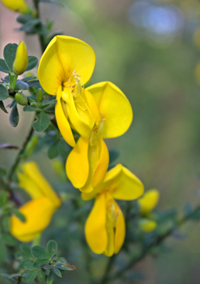 Invasives
Invasives
Scotch Broom
The deceptively beautiful buttercup-gold shrubs that today cover the hillsides were introduced to California in the 1850s as an ornamental shrub. It grew well in the mild climate and soon was pressed into service for erosion control. However, it became a cautionary tale of “too much of a good thing.” It thrived and spread, seeds carried on the wind, in winter runoff and on the coats of animals just passing through.
Unfortunately, once it was established it proved impossible to eradicate. The only animals that would eat it were rabbits, and then only the young shoots; even deer and goats found it inedible. It would re-sprout after being chopped down, frozen, or burned. Plus, it burned readily. A horror of a plant, but what a pretty package.
IMAGE: By Brylie Oxley (Own work) [CC BY-SA 3.0 (http://creativecommons.org/licenses/by-sa/3.0)], via Wikimedia Commons
Russian Thistle
Better known by its romantic Wild West nickname, the tumbleweed, Russian thistle didn’t actually make its appearance in the U.S. until around 1875. It was first introduced in South Dakota in contaminated flax seed. Within twenty years it made its way to California, where its ability to tolerate winter rainfall followed by summer drought have made it a major invasive.
FAUNA
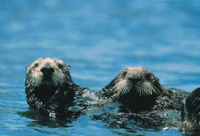 Marine Mammals
Marine Mammals
Otters
Sea otters were once plentiful on the west coast, but with the advent of settlers from the east were heavily hunted for their thick, soft fur. They came under government protection in the early 1900s, but are subject to continued population pressure from shipping, fishing and oil drilling, all of which impact their numbers. In addition, warming seas have driven sharks into feeding and breeding grounds for the otters. While sharks have not historically hunted otters for food, increasing numbers of otters are being found with evidence of shark attacks visible.
Whales
In the 1800s, some species of whales were hunted nearly to extinction due to the extreme versatility of whale derivatives.
Whale oil, particularly from the sperm whale, was used in lamps and for the manufacture of candles. It was also a prized lubricant due to its ability to retain lubricating qualities at extreme temperatures. Additional uses included high quality soap, medical ointments, sizing in wool processing, and applications in screw cutting, cord spinning, and steel tempering. Whalebone (actually the baleen from filter-feeding whales) was used in clothing manufacture, buggy whips, carriage springs, and umbrella ribs. Spermaceti was and still is used in perfume production.
Whaling was severely curtailed by the Civil War, and as a consequence other materials replaced whale substances. Commercial oil drilling began in 1869, and various petroleum products replaced whale oil for lighting and lubrication. Petroleum-based plastics soon appeared; these and spring steel replaced whalebone in many applications.
Whale populations began recovery. The gray whale makes the longest known mammal migration along the California coast line, beginning in the Bering Sea and ending at the Baja peninsula, a round trip journey of over 12,500 miles annually. Along the way they are joined (and occasionally harrassed) by killer whales. Humpback and blue whales, the latter the largest animals in the world, also migrate along the Pacific coast. While gray whale populations have recovered from near-extinction, humpback and blue whales are still on the endangered species list.
 Birds
Birds
The Farallon Islands, twenty-eight miles off the San Francisco coast, were once the largest seabird rookery in the United States. Separated from the mainland by turbulent seas and protected on all sides by forbidding steep cliffs, the islands harbored huge flocks of petrels, gulls, cormorants, and especially a variety of penguin-like birds called murres, as many as half a million nesting pairs by some estimates.
Eggs were prized by Gold-Rush miners, and the draw of an enormous cache of murre eggs free for the taking was too much of a temptation for the early entrepreneurs of the city. Rival gangs formed to gather the eggs for sale in town, and a short but fierce war even broke out in 1863 over access to the nesting territory. By the 1880s, when the egg pickers were finally evicted from the islands by the federal government, only 6,000 nesting pairs of murre remained. The population has since recovered to about 160,000 pairs, however.
IMAGE:By DickDaniels (http://carolinabirds.org/) (Own work) [CC BY-SA 3.0 (http://creativecommons.org/licenses/by-sa/3.0) or GFDL (http://www.gnu.org/copyleft/fdl.html)], via Wikimedia Commons

A major beneficiary of increased human activity in the mid-1800s was the population of native owls. Voracious consumers of rodents (up to 2,000 eaten per year per owl), these majestic and mysterious birds became the self-appointed guardians of fields and grain storage areas where rodents congregated. Barn owls in particular welcomed a partnership with mankind, moving into crannies in farm buildings so as to be closer to the buffet line.
IMAGE:Peter Trimming (Own work) [CC BY-SA 3.0 (http://creativecommons.org/licenses/by-sa/3.0) or GFDL (http://www.gnu.org/copyleft/fdl.html)], via Flicker
 Land Animals
Land Animals
Wild game was originally plentiful on the San Francisco peninsula and across the Bay in Marin County, but the rapid influx of human population in the mid-1800s caused a drastic decline in most species. Not only was habitat lost to farming and urban growth, but hunting for food and sport decimated animal populations.
Bears and Wolves
As late as the 1850s grizzly bears were still a nuisance near what is now the Mission District of San Francisco, and as the city grew these ‘interlopers’ were sometimes repurposed onto hotel bills of fare.
Wolves were also natives, though less plentiful, and John C. Fremont reported seeing wolves in central California as late as 1844. By the end of the century, however, wolves had largely been eradicated due to concerted efforts on the part of ranchers concerned about livestock losses.
Deer and Elk
Tule elk (a California native), and blacktail deer (a variety of mule deer) were plentiful in Marin County until the Gold Rush took its toll. Tule elk were nearly eradicated, but were brought back from the brink of extinction by a conservation-minded cattle rancher in central California who found the last herd, consisting of 30 individuals, on his land in 1874. These animals have since been re-established in the Point Reyes National Seashore.
Coyotes
Coyotes’ historical range prior to the 1880s was the Great Plains and the Southwest, ranging south through Mexico and north into southern Canada. Between 1880 and 1930, as larger predators such as wolves and bears were eradicated or driven out, coyotes moved into California. Like the owls, coyotes have benefited from the increased rodent population that followed human settlement, and they are now found even in urban areas such as San Francisco and Los Angeles.
Bobcats
With agriculture comes rabbits, and rabbits multiply at an insane rate– just ask Australia. As farmers and ranchers moved into California and larger predators vanished, the local population of rabbits might have grown out of bounds were it not for mid-range predators such as the bobcat. Up to 60% of a bobcat’s diet comes from rabbits, and another 20-30% from rodents, making the cat a welcome addition to cultivated society.
IMAGE:By tomsaint11 (http://www.flickr.com/photos/tomsaint/3331194293/) [CC BY 2.0 (http://creativecommons.org/licenses/by/2.0)], via Wikimedia Commons
Invasives
Squirrels
California only has two native squirrels, western grey squirrels (reclusive and seen primarily in oak woodlands) and Douglas squirrels (found in conifers along the coast and in the Sierras).
Far more commonly seen than the California natives are two introduced species, Eastern fox squirrels and Eastern gray squirrels. Both were introduced to California in the late 1800s, into San Francisco’s Golden Gate Park (although the former have since died out there).
IMAGE:By Ingrid Taylar from San Francisco Bay Area – California, USA (Squirrel Contemplation) [CC BY 2.0 (http://creativecommons.org/licenses/by/2.0)], via Wikimedia Commons
Sparrows
The common house sparrow is not native to the U.S., but rather was deliberately introduced here not just once, but several times. The first was in 1851 in Brooklyn; the second in the early 1870s in both San Francisco and Salt Lake City. By 1900 the bird had spread to the center of the country from both coasts, and now is one of the more common birds seen.
Pigeons
City pigeons, sometimes disparagingly referred to as “flying rats”, are found virtually throughout the world, yet are actually an invasive species in most places including the U.S.. They probably originated in southern Asia and have been documented in Israel for at least three hundred thousand years. Yet they only appeared in the New World in 1606, when they were introduced in Nova Scotia.
Starlings
In 1890, a German immigrant named Eugene Schieffelin changed the course of avian history in the U.S. A member of the American Acclimatization Society, Eugene intentionally introduced plants and animals from the Old World to the New, in order to provide immigrants with familiar sights and sounds in their new home. European starlings were so successful that huge flocks of the birds (called “feathered bullets” by some) have become serious agricultural pests. In 1960 a flock of starlings was responsible for the most deadly bird strike accident in U.S. history, when 62 people were killed in an airline crash in Boston.
Snails
The common garden snail, Helix aspersa (or Cornu aspersum), is native to France, where it is affectionately known as “petit gris” (little gray). A staple of French cuisine along with its cousin, Helix pomatia, the snail was reportedly imported to the U.S. and released in the wild by a homesick Frenchman. A less romantic version has the snail hitchhiking to California on grapevine cuttings from Spain in the 1850s.
IMAGE: A Snail (Cornu aspersum) in Balboa Park. Jon Sullivan via Wikimedia Commons.
Red Foxes
Two non-native species have been identified as having the greatest global impact of any animal. The first is the domestic house cat. The second is the red fox (vulpes vulpes).
Native foxes have lived in California since pre-history, but non-native red foxes were originally introduced in the Sacramento Valley of California in the 1870s, shortly after the transcontinental railroad was completed. Some were brought in for sport (fox hunting) while others were imported as semi-domesticated fur animals, farmed for their warm, thick pelts.
However, the very characteristics that made them good farm animals– fecundity and willingness to live in close proximity to humans– are the traits that make them a serious problem in the modern world. The feral populations endanger ground-nesting birds (including domestic chickens) and interbreed with native red fox populations, weakening the genetic structure of the native species.
Ironically, the decline in fur usage in the fashion trade beginning in the 1970s may have dramatically increased non-native wild red fox populations due to deliberate release of stock from defunct fur farms.
Bullfrogs
Bullfrogs are native to eastern United States and occur naturally only as far west as Oklahoma. However, they were introduced to California and Colorado during the early 1900s, apparently an accidental release during fish-stocking operations. They are considered an invasive species and a threat to native red-legged frogs.
IMAGE: Bullfrog, Colony Farm Regional Park, Port Coquitlam, British Columbia |Source=http://www.naturespicsonline.com/Author=Alan D. Wils licensed under the Creative Commons Attribution-Share Alike 2.5 Generic license.
FURTHER READING AND OTHER REFERENCES
Gilliam, Harold and Michael Bry. The Natural World of San Francisco. New York: Penguin, 2006.
“California Invasive Species,” https://www.wildlife.ca.gov/Conservation/Invasives/Species
“Urban Coyote Research”, https://urbancoyoteresearch.com/about-coyotes
(Posted August 23, 2017)
